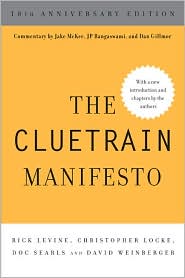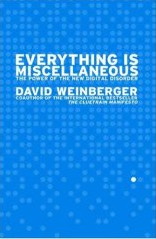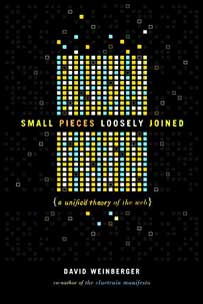June 29, 2011
[ftf] The offers
Kiran Sethi, founder of the Riverside School in Ahmedabad, India, says that even when our school systems fail, we continue to support them. She shows a video: When children do good, they do well: They are engaged with their community, and are out-performing India’s best schools in math and science. She has also influenced her city to create spaces for children, via her “Apoch” project: A protagonist in every child. “The city becomes a playground” providing events for children, for free. A clean up the parks campaign. Four cities, 50,000 children. Then “the world’s largest Design for Change” challenge: Feel, imagine, do, share. They have a curriculum and a toolkit. In 30 countries, 350,000 children are saying “I can” to cleaning up beaches, preserving tribal cultures, ending bullying…
|
NOTE: Live-blogging. Getting things wrong. Missing points. Omitting key information. Introducing artificial choppiness. Over-emphasizing small matters. Paraphrasing badly. Not running a spellpchecker. Mangling other people’s ideas and words. You are warned, people. |
VanDyck Silveira, CEO of IBMEC in Brazil. IBMEC is a business school branching out to be come a tech school. 80% of the world’s educational expenditures go to university students. Only 20% of funding goes to primary education. The poor end up financing the rich. Only 20% of Brazilians go to university. But, over the past twenty years, Brazil has developed a flourishing middle class. The less advantaged social classes have been mainly responsibly for the growth in higher ed in the last decade. IBMEC is a for-profit organization that has focused on quality rather than educating masses; it scores very highly in gov’t metrics.
Gordon Freedman [ pdf], VP at Blackboard, thinks about systems change. Blackboard has 5000 institutional clients. He speaks with educators in many countries and finds that we’re all in about the same place. “There are very few outliers in education.” The world of work and the world of kids have changed, but education is still basically the same. What’s now poised to make a difference? Neuroscience and the science of learning; computational modeling and simulation; information science and tech; knowledge economy and information society. Gordon Freedman crowbars educational change into three levels: traditional (work within the system); transitional (work around the system); transformational (Make a modern system). He says most of the people in this room are in the transitional system. Gordon wants to ask the transformational question of how we can make difference by bringing in people from outside of education. We should be moving from the industrial, institutional model, to an informational, individual model.
Funding education out of taxes no longer works. Schools are in deficit. We need organizations to look at the alternatives. New networks, peer learning, new knowledge, etc. “Everyone assumes there is a fourth grade or a sixth grade. Why is that?” Why aren’t we redesigning education with all of the leading resources available around the world; we need to break out of the education circle. And why aren’t we redefining students as capable young people who can participate in building a new education system?
Q: Kiran, where’s your funding come from?
A: Design for Change is open source software available to all.
Q: VanDyck…?
A: We have our own campuses and franchises that partner with excellent schools.
Q: Gordon, what is Blackboard’s business model?
A: We’re licensed by schools. We’re changing from looking at the classroom as being the basic unit to looking at the student as the basic unit.
Q: You said 18M Indians are in college. We need new models if we are to scale up.
Kiran: Until now, the gov’t focused on access to ed. Now we’re working on retention. One size won’t fit all. We need many models.
Q: If we make a new system, what should it look like? We all agree that the top down hierarchical model isn’t working anymore, and that private and public should coexist. But what about focusing on classrooms vs. individuals. We need a way to learn across and between levels. We can’t design the future, but we need to create an architecture for learning.
– Higher ed has dropped the ball. [A “-” indicates a change in speakers]
Shia Rashef is asked to talk about the University of the People, an open, online basically free university. (The students pay for exams: $10-$100, depending on the country.) They have 1,000 students, and 2,000 professor volunteers.
Q: We shouldn’t narrow ourselves to the future of the educ system instead of the future of education. Basic skills will probably be learned outside the schoolhouse. The educational system is failing men in so many societies [?].
Q: Education for what?
Gordon: Strong curious minds.
Kiran: More design thinking, incoroporating diversity
VanDyck: Creating leaders, people with free minds, entrepreneus








